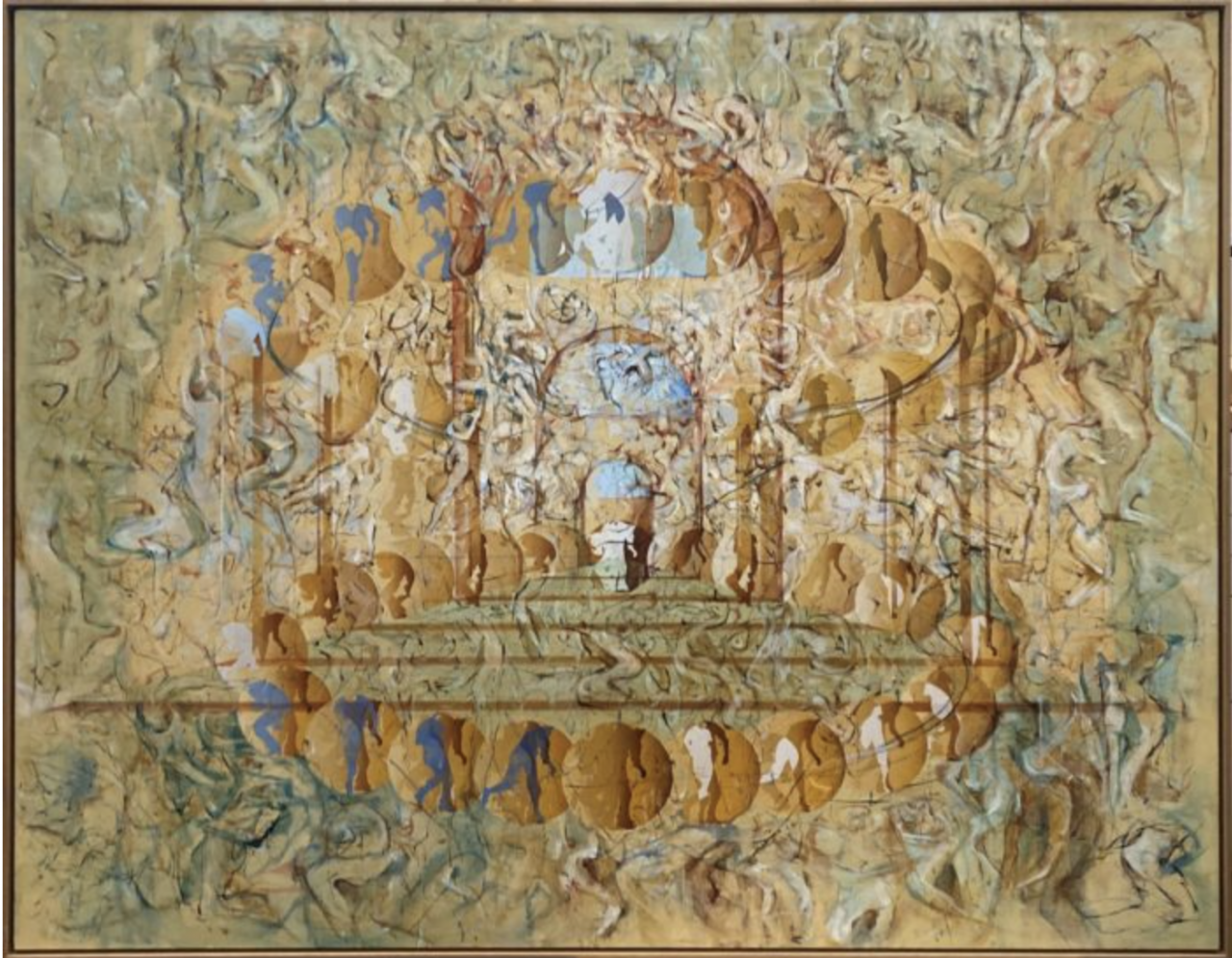exhibition

17 Apr 2024 (Wed) – 29 Apr 2024 (Mon – public holiday) Last day closes at 5pm
Nihonbashi Mitsukoshi Main Bldg. 6F Fine Arts Contemporary Gallery
The Mitsukoshi Contemporary Gallery is pleased to present Keiji Usami’s ‘School of Athens’.
Keiji Usami, one of the leading painters in Japan’s post-war art history, was born in Suita, Osaka in 1940 and spent his childhood in Wakayama Prefecture.
He aspired to become a painter and set up his studio in Kunitachi City, Tokyo. From the beginning of his career, Usami studied painting on his own, while being closely involved in all fields of art, including art history, music and poetry.
A major turning point for Usami came in 1965 when he came across a culture magazine, LIFE, in the USA.
From a news photograph of a riot in the Watts area of Los Angeles that appeared in the magazine, Usami extracted four human figures – “flinching”, “crouching”, “running” and “throwing stones” – and dared to separate them from the political context of the riot, symbolising them and developing them on the canvas. The work is a new kind of abstract painting.
There was a strong desire to create new abstract paintings, and an attempt to connect effectively with the world art trends of the time by rejecting the compositions that governed space in the creation of paintings, and developing paintings that were mainly based on the structures extracted by layering human figures.
Also, from this period onwards, he consciously produced many large-scale works measuring up to three metres, which were rarely seen in Japan.
His works, in which he added the ‘texture’ characteristic of Asian art to the large scale paintings that were the trend in Western art, were highly acclaimed both in Japan and abroad, and he participated in the 36th Venice Biennale in 1972 and served as artistic director of the Steel Pavilion at Expo ’70 in 1970.
Usami’s work established a certain reputation, but it was not until 1991, when he moved to Echizen City, Fukui Prefecture, where he built a new studio on a hilltop in a good coastal location overlooking the sea, that he began to see a major change in his work.
Usami’s work, which until then had been mainly structural, architectural and mathematical in its imagery, was greatly inspired by the majestic nature, adding a mystical element and sublimating it in an extremely organic way, moving towards a philosophical definition of the fundamental issues common to all humanity. The work is a philosophical definition of the fundamental issues common to all mankind.
This exhibition focuses on works from the Athenian Academy series, published in 2004, which marked a turning point in Usami’s later years of production.
The School of Athens is one of the most famous works by the leading Renaissance artist Raphael Santi, painted between 1509 and 1510 in the Room of Signatures in the Vatican Palace as a wall painting representing philosophy among the murals representing theology, law, philosophy and poetry.
Usami chose Raphael’s masterpiece, which brilliantly embodies the classical spirit of the High Renaissance, as the subject matter for his work on the theme of the ‘restoration of time’.
It is an attempt to recover the effective spirituality of a static era in the present day, and represents a large circle with a time axis cultivated by the knowledge of mankind, which is also the flow of history.
The Athenian School series is the first of Usami’s new attempts to revise Renaissance art in a contemporary interpretation, and is an important step in the development of her masterpiece series, The Deluge, based on Leonardo da Vinci’s A Deluge, which is the culmination of her work. A Deluge” by Leonardo da Vinci.
We hope that this exhibition will provide an opportunity for many people to view the work of Keiji Usami, which speaks many words if you lean in close and listen carefully.
